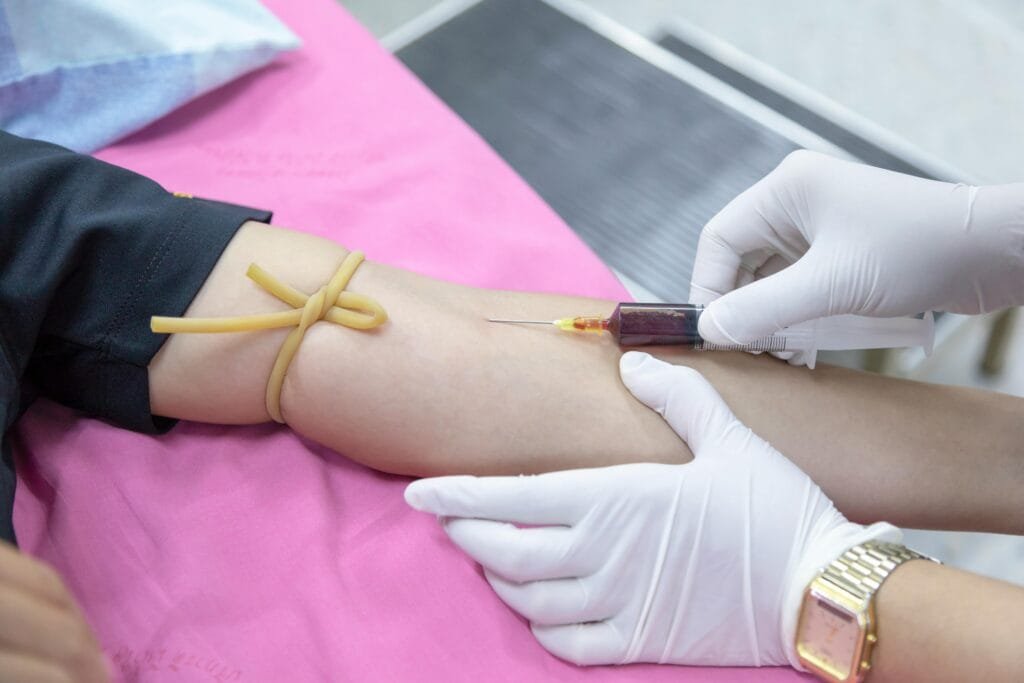The Impact of robotics on surgery
Industries across the globe have embraced robotics including healthcare. Within the surgical domain, robotic systems have established themselves as invaluable instruments that improve efficiency in performing procedures while offering major benefits to patients and practitioners. In this article, the impact of robotics on surgery is analyzed in terms of its merits, concerns, and the future of the technology.
The Rise of Robotic Surgery
The emergence of robotic surgery dates back to the 1980s, with the development of the PUMA (Programmable Universal Machine for Assembly) robot. Nevertheless, it was not until the 21st century that robotic systems tailored for surgical purposes became widely used. The da Vinci Surgical System, created by Intuitive Surgical, has emerged as the most recognized and commonly utilized robotic surgical system worldwide.
How Robotic Surgery Works
Components of Robotic Surgical System:
- Surgeon’s Console: This is the surgeon’s primary interface. It includes a 3D Visualization System that utilizes high-definition 3D cameras mounted on the arms of the robot to give the surgeon a magnified view of the surgical field in a realistic three-dimensional manner. Moreover, the manipulative controls allow the surgeon to operate the robotic arms with ease while mimicking the natural movements of his hand. Moreover, foot pedals can additionally be utilized to control various functions of the robotic system. For instance, pedals can be used for zooming the camera or activating the robotic instruments.
- Patient-Side Cart: This component which houses the robotic arms encompasses and integrates the remaining components of the robotic system including the instruments and components of modular robotics.
- Robotic Arms: These are highly movable, articulated arms that are designed to facilitate the manipulation of the surgical instruments to be used on the patient.
- Endoscope: The endoscope incorporates a light and camera at the tip of the thin, flexible tube and provides a detailed 3D view of the surgeon’s console.
Also Read about bifidobacterium longum benefits
Surgical Procedure:
- Preparation: The patient lies on the operating table and the surgical area is ready. Surgeons make several small incisions in the patient’s abdomen or chest.
- Insertion of Robotic Arms: Surgeons insert two robotic arms and one endoscope through the small incisions.
- Surgical Maneuvers: The surgeon sits attentively at the console, using the hand controls to precisely manipulate the robotic arms.
- Translation of Motion: The robotic system swiftly translates the surgeon’s delicate hand movements into extremely precise movements of the robotic arms, along with scaling those movements appropriately. This enables a considerably higher level of dexterity along with precision than customary laparoscopic surgery, in which the surgeon’s hand movements are directly translated to the instrument.
- Filtering of Tremors: Small, involuntary tremors in the surgeon’s hand movements are effectively filtered out by the highly advanced robotic system, thus yielding considerably smoother and more precise surgical actions.
- Magnified 3D View: Employing a considerably magnified 3D view of the surgical field, the surgeon achieves a substantially enhanced depth view and extraordinarily improved visualization of delicate structures.
- Procedure Completion: After the surgical procedure’s completion, surgeons swiftly remove the robotic arms and endoscope and then precisely close the incisions.
Benefits of Robotic Surgery
Robotic surgery provides many benefits compared to customary open and minimally intrusive surgery.
- Enhanced Precision and Dexterity: Greater precision and dexterity are afforded to surgeons by robotic systems, allowing for the performance of at least several complex procedures with a considerably increased level of accuracy and control. A magnified 3D view and an intuitive interface improve a surgeon’s capacity to visualize and manipulate at least several tissues.
- Minimally Invasive Approach: Robotic surgery typically uses smaller incisions than customary open surgery, resulting in an important reduction in pain, a decrease in blood loss, and substantially faster recovery times for patients.
- Improved Surgical Outcomes: Robotic surgery has yielded improved surgical outcomes in an important number of instances. These improvements include a reduction in complications, shorter hospital stays, and a faster return to normal activities.
- Ergonomic Benefits for Surgeons: Robotic surgery offers ergonomic advantages to surgeons; they can comfortably perform at least several procedures while seated at the console, thus reducing physical strain. This considerably reduces strain and fatigue, thus enhancing their overall well-being.
Applications of Robotic Surgery
Robot-assisted surgery shows great flexibility in many surgical areas and is changing how we do many operations.
General Surgery
- Hysterectomies: Surgeons perform hysterectomies, removing the uterus. This procedure is frequently necessary to treat conditions such as fibroids or endometriosis. Robotic assistance offers considerably enhanced precision, along with substantially minimized blood loss.
- Prostatectomies: Surgeons perform prostatectomies to completely remove the prostate gland, a procedure done most often to aggressively treat prostate cancer. Robotic surgery enables surgeons to use several nerve-sparing techniques, thus potentially preserving some sexual function.
- Colectomy: Surgeons perform a colectomy to remove a portion or the entirety of the colon. This procedure is frequently necessary for treating serious conditions such as colon cancer or inflammatory bowel disease. Robotic systems allow surgeons to perform at least two detailed dissections and several precise anastomoses (reconnecting the bowel).
Gynecology
- Hysterectomies: Robotic-assisted hysterectomies provide meaningful advantages, including substantially reduced blood loss and greatly faster recovery times.
- Myomectomies: Uterine fibroids are removed during myomectomies, thereby preserving the uterus in a large proportion of women who desire to retain their fertility. Fibroids are removed with exceptionally high precision through robotic surgery, while damage to surrounding tissues is considerably minimized.
- Pelvic Surgeries: Pelvic surgeries involve several types of procedures, such as treatments for endometriosis, several ovarian cysts, and some instances of pelvic organ prolapse. Robotic systems offer considerably improved visualization and substantially increased dexterity in difficult pelvic surgeries.
Urology
- Prostatectomies: Robotic prostatectomies in urology aggressively strive to completely remove the prostate gland while simultaneously preserving important nerves, urinary continence, and sexual function.
- Nephrectomy: Surgeons perform a nephrectomy to remove one or both kidneys; this procedure is frequently undertaken for the treatment of kidney cancer. Minimally intrusive access to the kidneys is achieved through robotic surgery, resulting in considerably reduced blood loss and substantially accelerated recovery.
- Cystectomy: A cystectomy is an important surgical procedure that entails the complete removal of the urinary bladder, usually a necessary intervention for cases of bladder cancer. Robotic surgery enables extraordinarily complex reconstructions and considerably enhances surgical precision.
Cardiothoracic Surgery
- Coronary Artery Bypass Surgery (CABG): Coronary Artery Bypass Surgery, also known as CABG, makes new pathways for blood to flow to the heart. Robotic assistance improves visualization and precision in at least some complex coronary artery bypass procedures.
- Valve Repair: Performing repairs or replacements of heart valves, such as the mitral valve repair. Robotic systems offer improved dexterity for at least several detailed procedures within the heart.
- Lung Surgeries: Complex lung surgeries include procedures such as lobectomy, which involves the removal of a lung lobe, along with lung cancer surgery. Robotic assistance considerably minimizes invasiveness as well as improves surgical outcomes.
Do you know about b. longum benefits
Head and Neck Surgery
- Thyroid and Parathyroid Surgeries: Thyroid and parathyroid gland surgeries involve the removal of one or more of these glands, frequently to address benign or cancerous conditions. Precise dissection is eased by robotic surgery, along with a minimization of the risk of nerve damage.
Bariatric Surgery
- Gastric Bypass: A smaller stomach pouch is created and a portion of the small intestine is bypassed to reduce the intake and absorption of a large amount of food. Robotic systems improve the precision of at least three aspects and reduce complications during this complex procedure.
- Sleeve Gastrectomy: Sleeve gastrectomy involves removing a larger percentage of the stomach to form a smaller, tube-shaped stomach. Robotic surgery offers superior visualization, along with greater control, during this procedure.
Challenges and Considerations
Robotic surgery provides many advantages but also has some drawbacks.
Cost: Robotic systems’ high purchase and maintenance costs considerably increase healthcare expenses.
Training and Expertise: Surgeons need at least five years of specialized training to operate robotic systems effectively; this training is often time-consuming and expensive.
Ethical Considerations: Several concerns have arisen regarding the potential displacement of at least two hundred surgical technicians and the moral implications of assigning an important number of complex surgical tasks to automated systems.
The Future of Robotic Surgery
Huge promise is held by the number of developments in the future of robotic surgery.
- Enhanced AI and Machine Learning: Integrating at least two artificial intelligence and machine learning algorithms into robotic systems. This integration improves decision-making processes, optimizes surgical workflows, and increases patient safety.
- Minimally Invasive Approaches: Aggressively pursuing the development of considerably less intrusive surgical techniques, including natural orifice transluminal endoscopic surgery (NOTES), to substantially minimize patient effects.
- Telepresence Surgery: Robotic surgery’s capabilities extend to many remote locations, thus allowing surgeons to conduct several procedures on patients situated at large distances.
- Personalized Surgery: Tailoring surgical techniques for each patient, considering their anatomy coupled with their complete medical history.
Robotic surgery has considerably changed the landscape of surgical care, providing several benefits for both patients and surgeons. Although some challenges persist, large active improvements in technology and surgical techniques are expected to considerably enhance the capabilities of robotic systems and improve patient outcomes. With improvements in robotic surgery, its substantially important role in the future of healthcare is expected to be further increased.
Editorial Comments:
Robotic surgery, a major innovation in minimally invasive surgery, combines advanced robotic systems with the precision of human expertise. First popularized by the da Vinci Surgical System, these technologies have transformed various specialties, including urology, gynecology, and general surgery. Robotic systems enable surgeons to perform complex procedures through small incisions, using robotic arms controlled by a console for enhanced precision, dexterity, and visualization.
Studies, such as those published in The Lancet and JAMA Network, highlight robotic surgery’s benefits, including reduced blood loss, shorter hospital stays, and faster recovery. However, it also presents challenges, such as high costs, steep learning curves, and the potential for overuse in non-complex cases. Articles from PubMed and the American College of Surgeons underscore the importance of ongoing training for surgeons and a balanced evaluation of clinical outcomes to maximize these systems’ potential.
Emerging trends, including AI integration and haptic feedback, aim to further enhance the capabilities of robotic surgery. Despite its limitations, robotic-assisted surgery continues to revolutionize healthcare by offering patients and surgeons minimally invasive solutions with unparalleled precision.
References:
Intuitive Surgical – Information on da Vinci Surgical Systems: Intuitive Surgical.
PubMed Central – “The Role of Robotic Surgery in Modern Healthcare”: PMC Article.
American College of Surgeons – “Robotics in Surgery”: ACS Resource.
The Lancet – “Advancements and Challenges in Robotic-Assisted Surgery” (Article from 2022).
JAMA Network – “Comparative Outcomes of Robotic Surgery vs. Conventional Laparoscopy” (2021 study).





Pingback: HeLa: 7 Incredible Lessons from Henrietta Lacks’ Hela Legacy